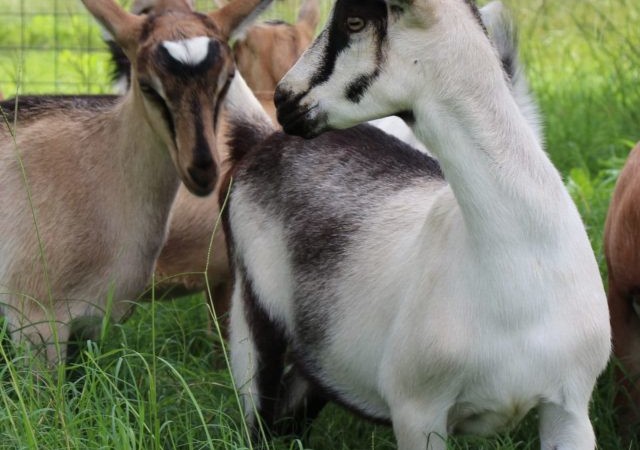

Cow’s milk is the standard “drinking milk,” but goat’s milk enjoys a niche market for certain consumers. It’s easier to digest and some folks with dairy sensitivities can consume it safely.
Goats are hardy animals that are easy to keep. They forage well on less-than-ideal pasture for cattle and are inexpensive to keep. They’re much smaller and easier to handle than cows. And as highly intelligent, friendly farm animals, they’re a good animal to have around. They’re also agile and curious, which can make for some fun goat-watching as well as some trying times (you will need good fencing).
Choose a Dairy Goat Breed
The first step to raising dairy goats for milk is to learn about the different standard dairy goat breeds. Although there are hundreds of goat breeds, only a handful are commonly used for dairy goats. Alpines, Saanens, Oberhalsis, and Toggenburgs all originated in the Swiss mountains and are very adaptable to cooler climates and less-than-perfect conditions. LaMancha and Nubian goats have more tropical origins and do well in hot summers.
Housing and Fencing Dairy Goats
Dairy goats need a clean, dry place that’s free of drafts. If you will be kidding over cold season, you’ll need a barn that’s warm and enclosed. Providing plenty of forage for your goats is key to a happy, healthy herd. And you will need to make sure that you have extra sturdy, probably electric reinforced, fencing for your goats.
How to Feed Dairy Goats
Goats do best on a foundation of good forage: woods, shrubs, and grasses for them to roam on and eat to their heart’s content. Free feeding a high-quality hay is also a common practice, and if you have seasons where fresh forage won’t be available, hay will be your mainstay feed for these times. There are some tips and tricks to keeping goats well-fed, so be sure to learn the details of feeding goats properly.
Make sure your goat forage area is free of any plants that may be toxic to goats.
How to Keep Dairy Goats Healthy
Managing your herd means keeping them free of diseases and illnesses. The saying, “An ounce of prevention is worth a pound of cure” is very true when it comes to goats. It’s a lot easier to keep them healthy than to heal them once they’re ill. Learn the basics and what to look for when they’re sick – and when to head to a vet.
Managing Milk
Your Does will need to be bred once a year. Does should be 8 months old or at least 80 pounds (unless a small breed) before being bred. Typically, Does are bred in the fall. Does come into heat for three days every 17 to 21 days. Keep does separated from your buck until they come into heat. And once bred, they should be separated again, or the milk may taste off.
Kidding, or giving birth, typically happens about 150 days after breeding. Does often have twins and sometimes triplets. After birth, the doe will freshen, or begin to produce milk. If she is continuously milked, she will lactate for up to 10 months.
Does should be allowed to dry up for at least two months after a run of milk production before being bred again.
Goats produce so much milk that you can allow the kids to nurse and still take what’s left over. Most goat farmers confine the kids overnight after they are 2 weeks old and milk in the morning. After the morning milking, the kids can nurse on demand.
How to Milk a Goat
Milking a goat is a fairly easy process, especially if you learn hands-on from an experienced farmer. Many feed grain to the does during milking time. It’s important to keep milking time consistent. You’ll either milk once or twice a day, about 12 hours apart. Of course, you’ll need to make sure your milking equipment and area are clean, and that you are able to chill the milk as soon as you’ve milked the goat.
Goat’s milk is naturally homogenized because the fat globules are smaller than those in cow’s milk. The cream will not separate in goat’s milk, making butter and cream difficult to make. However, goat’s milk products are creamy and smooth because of these small fat globules.
 Contact Jaguza Support
Contact Jaguza Support